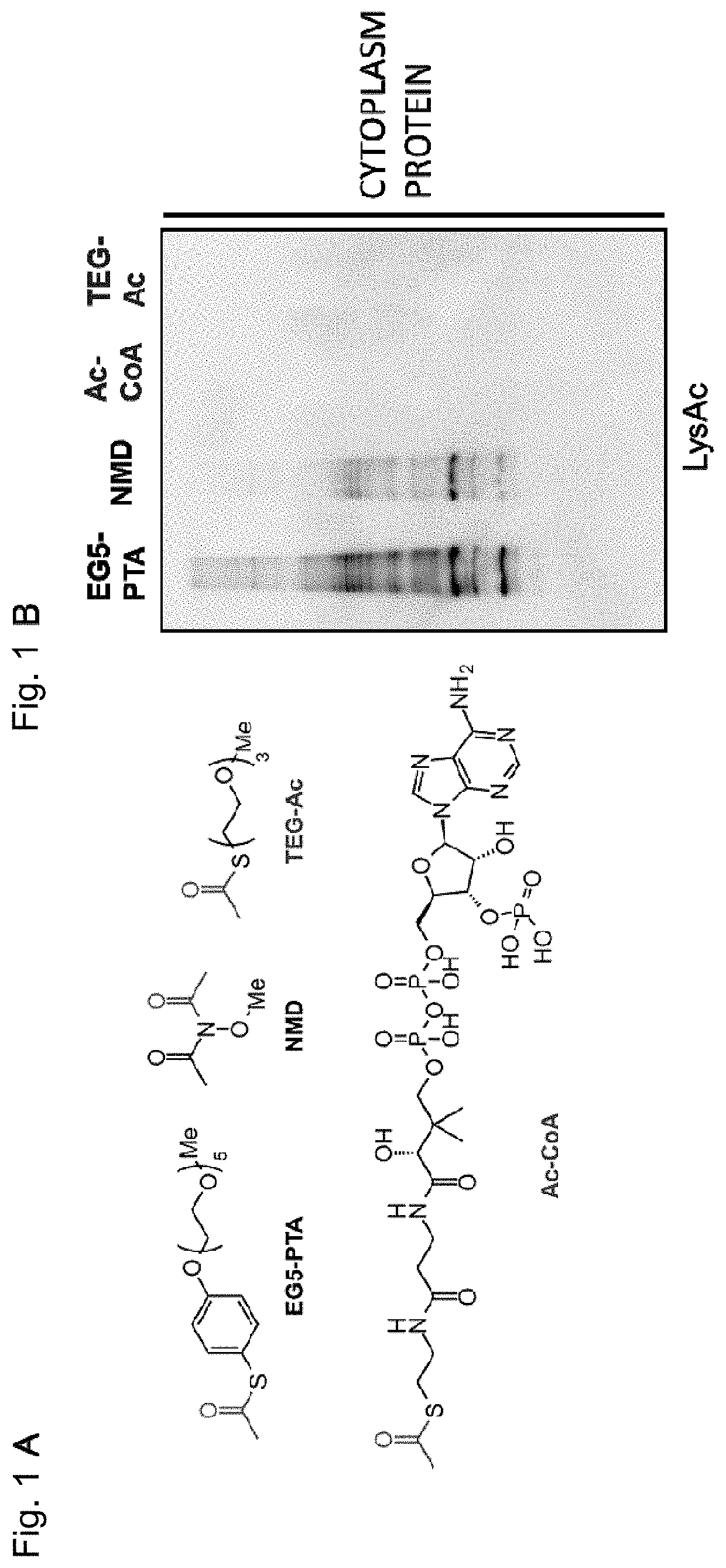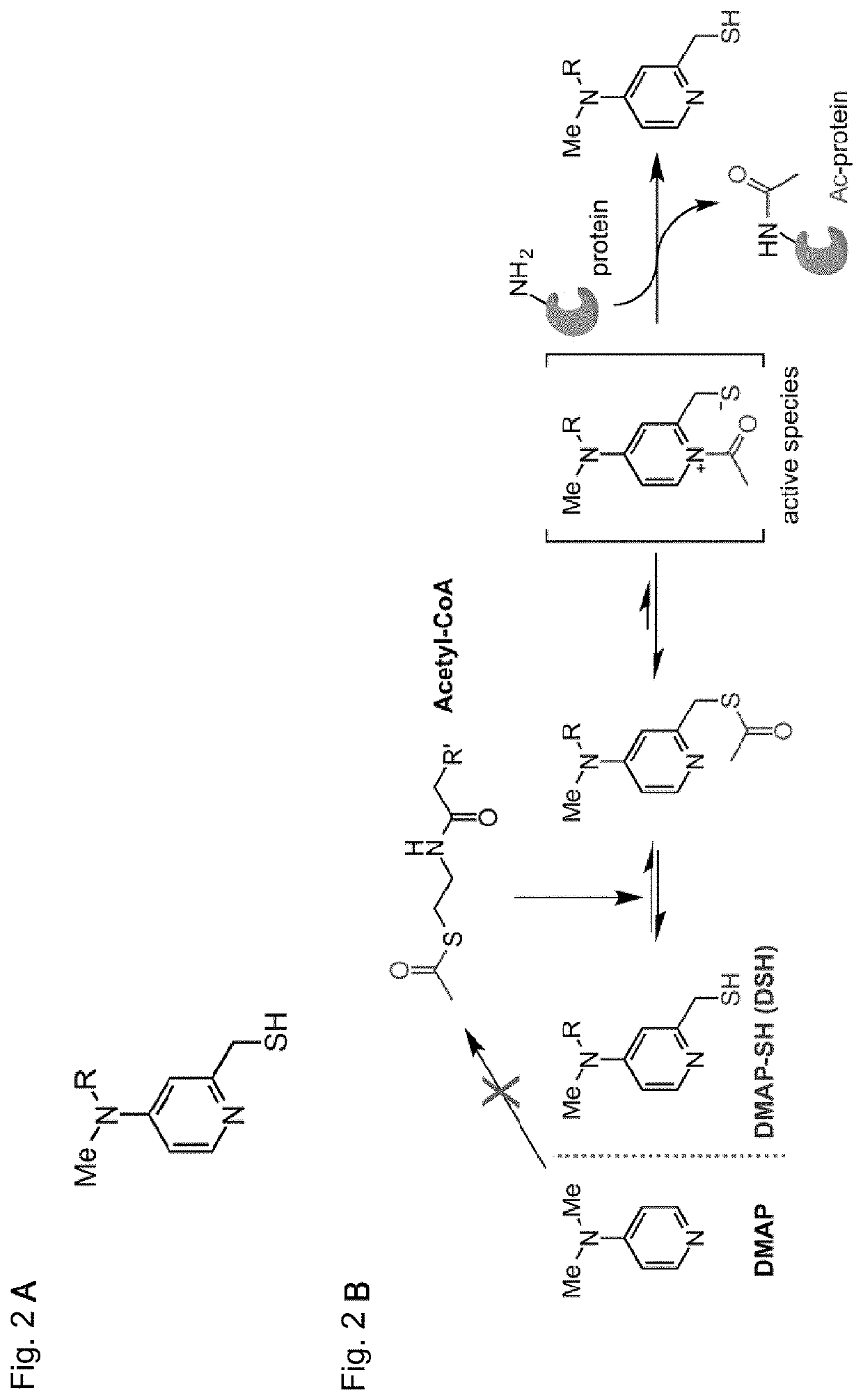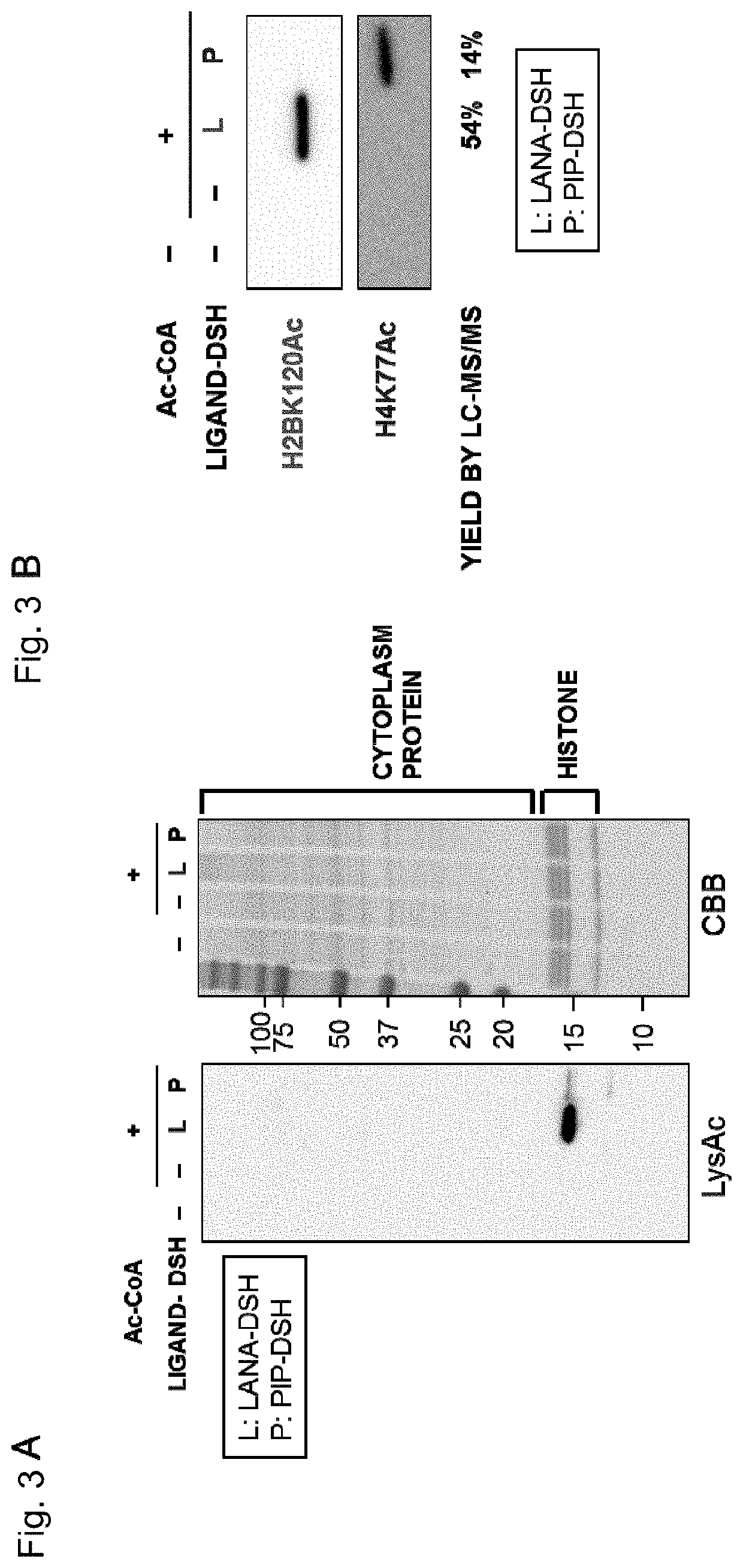Artificial catalyst system for selective acylation of chromosome protein
a technology of selective acylation and artificial catalyst, which is applied in the direction of amide active ingredients, peptides, drug compositions, etc., can solve the problems that the therapeutic effect cannot be expected, and achieve the effects of high selectivity of chromosome proteins, excellent practicality, and high versatility
- Summary
- Abstract
- Description
- Claims
- Application Information
AI Technical Summary
Benefits of technology
Problems solved by technology
Method used
Image
Examples
example
[0074]Hereinafter, the present invention will be described more specifically on the basis of Example. However, the present invention is not limited to Example below.
[0075][A. Materials and Methods]
[0076]1. Cell Fractionation
[0077]Approximately 106 cells were detached from a culture dish by a trypsin treatment. After washed with PBS, the cell pellets were suspended in a cooled, cell lysis buffer [50 mM Tris (pH 7.5), 300 mMNaCl, 0.3% Triton X-100, protease inhibitor cocktail, and 1 mM PMSF], and placed on ice for 30 minutes. After the centrifugation (4° C., 1500 rpm, 2 minutes), the supernatant was collected as a cytoplasm fraction.
[0078]2. Western Blotting
[0079]Proteins were separated on a 4-20% SDS-PAGE gel, and transferred to a PVDF membrane, followed by blocking with 5% skim milk suspended in TBST for the reaction between the PVDF membrane and primary antibodies. The primary antibodies used were as follows.
[0080]Acetylated-lysine antibody (#9441, Cell Signaling), anti-acetyl Hist...
PUM
| Property | Measurement | Unit |
|---|---|---|
| pH | aaaaa | aaaaa |
| structure | aaaaa | aaaaa |
| crystal structure | aaaaa | aaaaa |
Abstract
Description
Claims
Application Information
 Login to view more
Login to view more - R&D Engineer
- R&D Manager
- IP Professional
- Industry Leading Data Capabilities
- Powerful AI technology
- Patent DNA Extraction
Browse by: Latest US Patents, China's latest patents, Technical Efficacy Thesaurus, Application Domain, Technology Topic.
© 2024 PatSnap. All rights reserved.Legal|Privacy policy|Modern Slavery Act Transparency Statement|Sitemap



